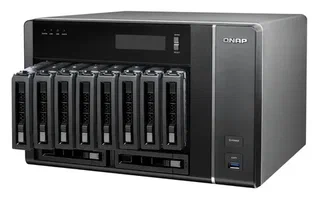What is the Difference Between 2-Bay and 4-Bay NAS Devices?

Network Attached Storage (NAS) devices are essential for managing and storing data in both home and business environments. When choosing a NAS device, one of the critical decisions is selecting the right number of drive bays. The primary options available are 2-bay and 4-bay NAS devices. Understanding the differences between these two configurations can help you make an informed decision based on your storage needs, performance requirements, and budget.
Understanding NAS Device Bays
At its core, a NAS device is a specialized computer designed to store and manage data, providing network access to shared storage. The number of bays in a NAS device refers to the number of hard drives or solid-state drives it can accommodate. A 2-bay NAS has two slots for drives, while a 4-bay NAS provides four slots. The choice between these configurations affects several aspects of the NAS’s performance, capacity, and redundancy.
Storage Capacity and Scalability
One of the most apparent differences between 2-bay and 4-bay NAS devices is their storage capacity. A 2-bay NAS can house two drives, which limits the total storage capacity to the combined size of these two drives. This setup is typically sufficient for small-scale applications, such as personal file storage or light-duty data management.
In contrast, a 4-bay NAS offers greater storage capacity due to its ability to accommodate four drives. This allows for larger total storage volumes and greater flexibility in managing your data. With more bays, users can install additional drives to expand storage as their needs grow. This scalability is particularly beneficial for growing businesses or households with increasing data demands.
RAID Configurations and Redundancy
RAID (Redundant Array of Independent Disks) configurations are crucial for data protection and performance optimization in NAS devices. A 2-bay NAS typically supports RAID 1, which mirrors data across two drives. This provides redundancy by duplicating data on both drives, ensuring that if one drive fails, the other maintains a copy of the data. However, RAID 1 does not offer additional storage capacity beyond the size of a single drive.
A 4-bay NAS supports a wider range of RAID configurations, including RAID 5 and RAID 6, which offer both redundancy and improved performance. RAID 5 uses striping with distributed parity, allowing for data recovery in the event of a single drive failure while maximizing storage capacity. RAID 6 is similar but provides extra protection by allowing for two simultaneous drive failures. These RAID levels provide a better balance of data protection, performance, and storage efficiency compared to RAID 1.
Performance Considerations
The performance of a NAS system is influenced by various factors, including the number of drives and the RAID configuration used. A 2-bay NAS may have limited performance capabilities compared to a 4-bay NAS, especially when handling multiple concurrent users or high-demand applications.
A 4-bay NAS generally offers superior performance due to the ability to utilize more drives. This setup can leverage RAID configurations that improve read and write speeds, enhancing overall system performance. Additionally, with more drives, a 4-bay NAS can handle larger amounts of data more efficiently, making it suitable for environments where high performance and data throughput are essential.
Power Consumption and Noise
When comparing 2-bay and 4-bay NAS devices, power consumption and noise levels are also important considerations. A 2-bay NAS typically consumes less power and generates less noise compared to a 4-bay NAS. This can be advantageous in environments where energy efficiency and minimal noise are priorities, such as home offices or small workspaces.
Conversely, a 4-bay NAS may have higher power requirements and generate more noise due to the additional drives and cooling mechanisms. While modern NAS devices are designed to be energy-efficient and quiet, it is essential to consider these factors based on your specific usage environment.
Cost and Budget Considerations
The cost of NAS devices varies significantly based on the number of bays and the features included. Generally, a 2-bay NAS is more affordable compared to a 4-bay NAS. The lower cost makes it an attractive option for users with modest storage needs or limited budgets.
A 4-bay NAS, while more expensive, offers greater capacity, performance, and redundancy. The higher initial investment may be justified for users who require extensive storage, advanced RAID configurations, or the ability to expand their storage over time. It is important to weigh the benefits of increased capacity and performance against the additional cost to determine the best fit for your needs.
Conclusion
Choosing between a 2-bay and a 4-bay NAS device depends on various factors, including your storage capacity needs, performance requirements, and budget. A 2-bay NAS is suitable for smaller-scale applications, offering basic redundancy and lower cost. In contrast, a 4-bay NAS provides greater storage capacity, advanced RAID options, and better performance, making it ideal for larger or growing environments. By understanding these differences, you can make an informed decision that aligns with your specific data management needs.
- Art
- Causes
- Crafts
- Dance
- Drinks
- Film
- Fitness
- Food
- Spellen
- Gardening
- Health
- Home
- Literature
- Music
- Networking
- Other
- Party
- Religion
- Shopping
- Sports
- Theater
- Wellness
- IT, Cloud, Software and Technology


